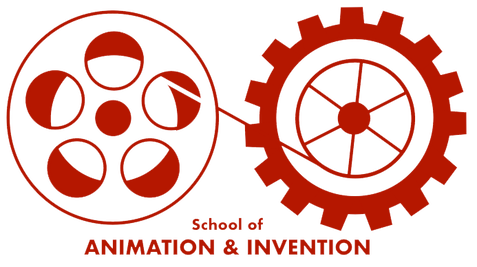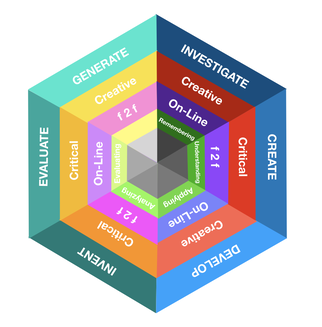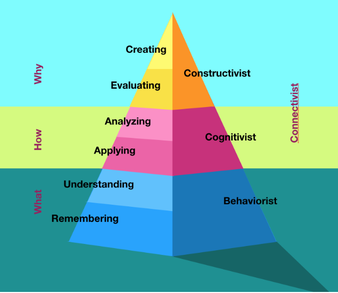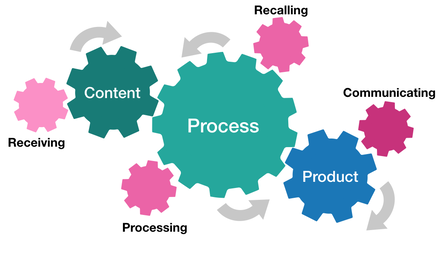No Grades, and No Grades
Project Based & Blended Learning Philosophy
Gradeless Achievement
Gradeless Classrooms
Personalised and Self-Paced delivery
Student Led, Teacher Coordinated
Studio Workshop Laboratory Environment
Delivering
|
Blended Learning
Mixed instructional modalities provide an ideal learning solution, using classroom and e-Learning delivery where each is most appropriate. This includes a mix of synchronous and asynchronous technologies. This mixed mode of education is an enabler for instruction to be designed to address diverse learning styles as well as meeting course objectives. Learners meet face to face for physical builds, experimentation and multi media creation, but determine and investigate content on line.
Mixed instructional modalities provide an ideal learning solution, using classroom and e-Learning delivery where each is most appropriate. This includes a mix of synchronous and asynchronous technologies. This mixed mode of education is an enabler for instruction to be designed to address diverse learning styles as well as meeting course objectives. Learners meet face to face for physical builds, experimentation and multi media creation, but determine and investigate content on line.
“Blended Learning Designs.
Drawing from best practices in both online and face-to- face methods, blended learning is on the rise at colleges and universities as the number of digital learning platforms and ways to leverage them for educational purposes continues to expand. The affordances blended learning offers are now well understood, and its flexibility, ease of access, and the integration of sophisticated multimedia and technologies are high among the list of appeals.
Many findings showcase an increase in creative thinking, independent study, and the ability for the student to tailor learning experiences to meet their individual needs."
The New Media Consortium & Consortium for School Networking. (2016). NMC/CoSN Horizon Report 2016: The K12 Edition. Retrieved from
http://www.nmc.org/publication/nmc-cosn-horizon-report-2016-k-12-edition/
|
Problem and Project Based work.
Students at SAI design, revise, implement and create inventions and animations through collaboration and self-review. Project based learning2 (PBL) encourages deep personalised learning through challenge and questioning. Teachers enable students to define and understand personal project objectives and parameters, then provide learning scaffolds of necessary academic knowledge and practical skill acquisition for students to manipulate. The project is developed through constructive critique, self-assessment and revision within the promotion of active participation and collaboration. Problem and Project based learning favours authentic inquiry over rote learning. |
“Fostering Authentic Learning
Project-based learning, challenge- based learning, and competency- based learning — all of these pedagogical trends are in service of creating richer and more hands-on real-world experiences for students. As higher education institutions prioritize active learning over rote learning, students are being viewed in a new light. Rather than being regarded as mere participants and consumers of knowledge, the embedding of maker culture in higher education has made them active contributors to the knowledge ecosystem. They learn by experiencing, doing, and creating, demonstrating newly acquired skills in more concrete and creative ways.
The New Media Consortium & Consortium for School Networking. (2016). NMC/CoSN Horizon Report 2016: The K12 Edition. Retrieved from
http://www.nmc.org/publication/nmc-cosn-horizon-report-2016-k-12-edition/
Gradeless Achievement
The concept of Letter grades implies that learning can be achieved exponentially and is therefore linear. SAI promotes active and consistent learning through continual dialogue between the educator and the learner. By creating a positive ‘Gradeless’ environment, students will experience growth by building on each success and determining that learning is a continual process. Grades are not comments. Comments alone necessitate dialogue, which necessitates collaboration, which necessitates growth.
Students can often pigeon hole themselves as either a failure or success in an given subject based on a letter grade. As “students associate themselves with the Grade they are given,” (P. Jory, 2017). Low grades result in demotivation resulting in lack of effort, resulting in continual low grades. High grades can result in apathy, where students tend not to challenge themselves further in an attempt to safeguard their higher grades. SAI encourages continual cyclic learning and assessment that is collaborative and meaningful.
Peter Jory, Director of Instruction, Technology and Innovation for the Sea to Sky school district, January 2017
The concept of Letter grades implies that learning can be achieved exponentially and is therefore linear. SAI promotes active and consistent learning through continual dialogue between the educator and the learner. By creating a positive ‘Gradeless’ environment, students will experience growth by building on each success and determining that learning is a continual process. Grades are not comments. Comments alone necessitate dialogue, which necessitates collaboration, which necessitates growth.
Students can often pigeon hole themselves as either a failure or success in an given subject based on a letter grade. As “students associate themselves with the Grade they are given,” (P. Jory, 2017). Low grades result in demotivation resulting in lack of effort, resulting in continual low grades. High grades can result in apathy, where students tend not to challenge themselves further in an attempt to safeguard their higher grades. SAI encourages continual cyclic learning and assessment that is collaborative and meaningful.
Peter Jory, Director of Instruction, Technology and Innovation for the Sea to Sky school district, January 2017
|
Personalised and Self-Paced Settings and Challenges
An individual students’ growth and expectations are considerations of both social and academic circumstance. Personalised learning environments enable individual growth at a personal pace. Students are challenged accordingly to their skill level and will be empowered to enhance one another. Students that are more challenged are likely to move through the curriculum at a greater pace. SAI encourages the contribution and ideas of a range of individuals in a supportive and collaborative space. |
Proudly powered by Weebly




